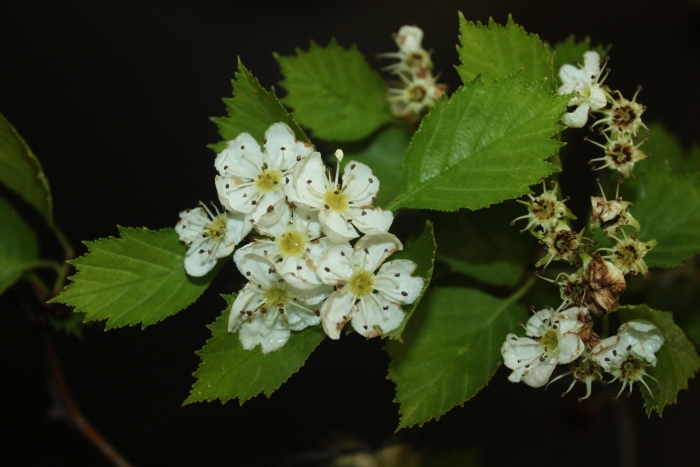Large-Thorn Hawthorn
(Crataegus macracantha)
Large-Thorn Hawthorn (Crataegus macracantha)
/
/

By Étienne Lacroix-Carignan no rights reserved
Public Domain
Image By:
By Étienne Lacroix-Carignan no rights reserved
Recorded By:
Copyright:
Public Domain
Copyright Notice:
Photo by: By Étienne Lacroix-Carignan no rights reserved | License Type: Public Domain | License URL: http://creativecommons.org/publicdomain/zero/1.0/ | Uploader: elacroix-carignan | Publisher: iNaturalist |




















































Estimated Native Range
Summary
Crataegus macracantha, commonly known as Large-Thorn Hawthorn, is a deciduous shrub or small tree native to open woodlands and forest edges in the Central and Eastern United States, as well as Eastern Canada. It typically grows to a height of 10-30 feet (3-9.1 meters) and a width of 10-20 feet (3-6 meters), often with a rounded crown. The plant is notable for its large thorns, which can be several inches long. It produces showy clusters of white flowers in late spring, followed by red berries that persist into winter and are attractive to birds.
Large-Thorn Hawthorn is valued for its wildlife benefits, particularly for birds that feed on the berries. It is used in urban planting, as a border shrub, or for naturalistic settings. It is also planted for its ornamental flowers and as a barrier plant due to its thorns. This species prefers full sun but can tolerate part shade, requires moderate water, and is adaptable to various soil types, though it thrives in well-drained soils. While generally low-maintenance, it can be susceptible to rust diseases and fire blight.CC BY-SA 4.0
Large-Thorn Hawthorn is valued for its wildlife benefits, particularly for birds that feed on the berries. It is used in urban planting, as a border shrub, or for naturalistic settings. It is also planted for its ornamental flowers and as a barrier plant due to its thorns. This species prefers full sun but can tolerate part shade, requires moderate water, and is adaptable to various soil types, though it thrives in well-drained soils. While generally low-maintenance, it can be susceptible to rust diseases and fire blight.CC BY-SA 4.0
Plant Description
- Plant Type: Shrub, Tree
- Height: 10-30 feet
- Width: 1-3 feet
- Growth Rate: Moderate
- Flower Color: White
- Flowering Season: Spring
- Leaf Retention: Deciduous
Growth Requirements
- Sun: Full Sun
- Water: Medium
- Drainage: Medium
Common Uses
Bee Garden, Bird Garden, Hedges, Hummingbird Garden
Natural Habitat
Open woodlands and forest edges
Other Names
Common Names: Black Hawthorn, Aubépine Á Épines Longues
Scientific Names: , Crataegus macracantha,
GBIF Accepted Name: Crataegus macracantha Koehne